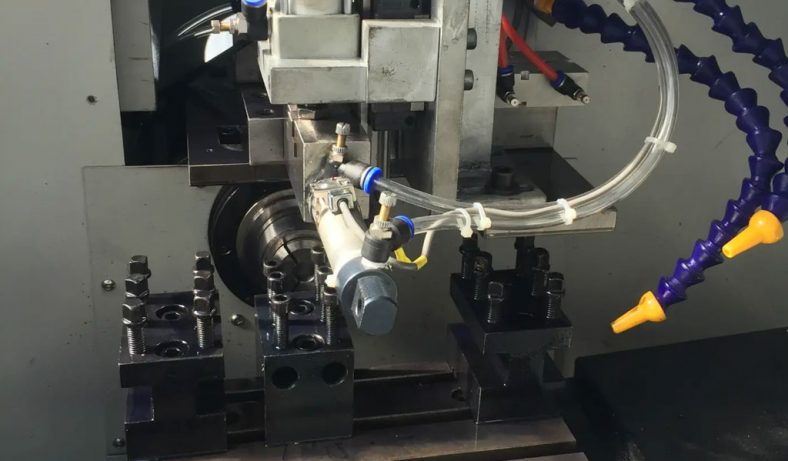CNC lathe machining has revolutionized the manufacturing industry with its precision, efficiency, and versatility. One of the essential aspects of CNC lathe machining is thread processing, a fundamental requirement in many engineering applications. This article delves into the various common processing methods of threads in CNC lathe machining, discussing their principles, advantages, limitations, and applications. By understanding these methods, manufacturers and engineers can make informed decisions to achieve optimal results in their machining processes.
View More Articles:

Threads Machining Methods In CNC Lathing
CNC (Computer Numerical Control) lathe machining is a cornerstone of modern manufacturing, enabling the production of complex and precise components with unparalleled accuracy. Threads, the helical ridges on cylindrical surfaces, are integral to many mechanical designs, such as fasteners, screws, and threaded parts. Achieving accurate and consistent threads is crucial for ensuring proper functionality and structural integrity. This article provides an in-depth exploration of the common processing methods of threads in CNC lathe machining, highlighting their significance in manufacturing processes.
Single-Point Threading
Single-point threading is a traditional method for producing threads on CNC lathes. It involves the use of a single-point cutting tool to create individual threads. The lathe’s spindle and leadscrew synchronization determine the thread pitch. This method is suitable for producing precise threads with various profiles.
Advantages:
- Precise control over thread dimensions and tolerances.
- Versatility in producing different thread profiles.
- Suitable for small production runs and custom threads.
Limitations:
- Slower process compared to other methods.
- Prone to tool wear, affecting thread quality and accuracy.
- Not ideal for high-production environments.
Applications:
- Prototype development.
- Custom or non-standard thread forms.
- Low-quantity production.
Thread Milling
Thread milling involves using a multi-toothed cutter to produce threads. This method is particularly useful for creating threads in challenging-to-machine materials or for producing threads on non-rotating parts.
Advantages:
- Suitable for materials with high hardness or toughness.
- Can produce both internal and external threads.
- Reduced risk of tool breakage compared to single-point threading.
Limitations:
- Limited to producing threads in through-holes.
- Complex programming for helical toolpaths.
- Potential for chatter and vibration.
Applications:
- Aerospace and automotive industries.
- Threads on hardened components.
3. Tapping
Tapping involves cutting internal threads using a tool called a tap. CNC lathes can automate the tapping process, improving precision and consistency.
Advantages:
- Fast and efficient for producing internal threads.
- Reduced tool wear compared to single-point threading.
- Suitable for high-volume production.
Limitations:
- Limited to creating internal threads.
- Prone to tap breakage in challenging materials.
- May require additional tool changes for various thread sizes.
Applications:
- Mass production of threaded holes.
- Assembly line manufacturing.
4. Die Threading
Die threading is a method for creating external threads using a die, which is a cylindrical tool with internal threads. The workpiece is rotated against the die to form the threads.
Advantages:
- Fast and efficient for producing external threads.
- Suitable for large-diameter threads.
- Minimal tool wear compared to single-point threading.
Limitations:
- Limited to producing external threads.
- Difficulties in controlling thread tolerances.
- Challenging for small-diameter threads.
Applications:
- Plumbing and pipefitting industries.
- Large-scale manufacturing of threaded components.
5. Forming
Thread forming is a process in which a thread is created by pressing a deformable workpiece material into a thread shape using a specialized tool. It’s a chipless method that offers advantages in terms of material strength and thread accuracy.
Advantages:
- Enhanced material properties due to cold working.
- High thread accuracy and surface finish.
- Suitable for a wide range of materials.
Limitations:
- Requires precise control over tool and workpiece materials.
- Not suitable for all thread profiles.
- Slower process compared to other methods.
Applications:
- Medical and pharmaceutical industries.
- High-strength threaded components.
Conclusion
CNC lathe machining has opened up new possibilities for manufacturing, and thread processing is a critical aspect of this technology. Each threading method discussed in this article offers a unique set of advantages and limitations, making them suitable for specific applications.
Whether it’s single-point threading for precision, thread milling for tough materials, tapping for speed, die threading for large diameters, or forming for material strength, manufacturers can choose the most appropriate method to achieve their desired thread characteristics.
By understanding these common cnc machining methods, engineers and manufacturers can optimize their CNC lathe machining processes and deliver high-quality threaded components for various industries.
